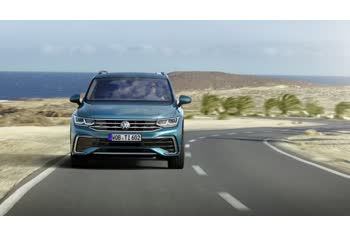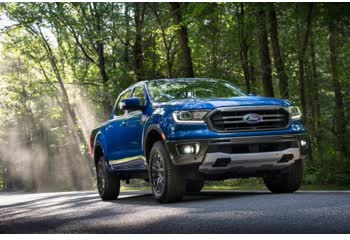Everything you need to know about specifications and performance - Seat Tarraco Tarraco 2019 - 2.0 TDI (150 Hp) 4Drive DSG

Overview:
What is the engine capacity of a Seat Tarraco 2019?
The engine capacity of the Seat Tarraco 2019 is 1968.
Seat Tarraco 2019 How many horsepower?
The engine power of the Seat Tarraco 2019 is 150 Hp @ 3500-4000 rpm..
What is the Seat Tarraco 2019 engine?
Seat Tarraco 2019 engine is DFGA. (Click to see other cars using the same engine)
How much gasoline does a Seat Tarraco 2019 consume?
The Seat Tarraco 2019 consumes 5.6 liters of gasoline per 100 km
General:
Brand: Seat
Model: Tarraco
Generation: Tarraco
Modification (Engine): 2.0 TDI (150 Hp) 4Drive DSG
Start of production: January, 2019
End of production: July, 2020
Powertrain Architecture: Internal Combustion Engine
Body type:Sports Utility Vehicle (SUV)
Seats: 5
Doors: 5
Engine:
Engine systems: Start & Stop System
Power: 150 hp @ 3500-4000 rpm.
Power per litre: 76.2 hp/l
Torque: 340 nm @ 1750-3000 rpm.
Engine Model/Code:DFGA
Engine displacement: 1968
Number of cylinders: 4
Engine configuration: Inline
Number of valves per cylinder: 4
Fuel injection system: Diesel Commonrail
Engine aspiration: Turbocharger, Intercooler
Engine oil capacity: 5.3 l
Coolant: 8 l
Engine layout: Front, Transverse
Cylinder Bore: 81 mm
Piston Stroke: 95.5 mm
Compression ratio: 16.2:1
Performance:
Fuel Type: Diesel
Fuel consumption (economy) - urban: 6.2 l/100 km
Fuel consumption (economy) - extra urban: 5.2 l/100 km
Combined fuel consumption (WLTP): 6.8 - 7.4 l/100 km
Fuel consumption (economy) - combined: 5.6 l/100 km
Emission standard: Euro 6
Acceleration 0 - 100 km/h: 9.8 sec
Acceleration 0 - 62 mph: 9.8 sec
Maximum speed: 198 km/h
Weight-to-power ratio: 11.5 kg/Hp, 86.8 Hp/tonne
Weight-to-torque ratio: 5.1 kg/Nm, 196.8 Nm/tonne
Acceleration 0 - 60 mph: 9.3 sec
Space:
Kerb Weight (kg): 1728
Max. weight (kg): 2410
Max load (kg): 682
Trunk (boot) space - maximum: 760 l
Permitted trailer load with brakes (12%): 2300 kg
Fuel tank capacity: 60 l
Permitted trailer load without brakes: 750 kg
Permitted trailer load with brakes (8%): 2300 kg
dimensions:
Length: 4735 mm
Width: 1839 mm
Height: 1674 mm
wheelbase: 2790 mm
Width including mirrors: 2118 mm
Front track: 1575 mm
Rear (Back) track: 1564 mm
Front overhang: 926 mm
Rear overhang: 1019 mm
Ride height (ground clearance): 192 mm
Minimum turning circle (turning diameter): 11.9 m
Approach angle: 19.1°
Departure angle: 21.4°
Powertrain, Suspension and Brakes:
Drivetrain Architecture: The Internal combustion Engine (ICE) drives the front wheels permanently, and the rear wheels are driven through an electrically or mechanically operated clutch if necessary.
Drive wheel: All wheel drive (4x4)
Number of gears and type of gearbox: 7 gears, automatic transmission DSG
Front brakes: Ventilated discs, 314x30 mm
Rear brakes: Disc, 300x12 mm
Assisting systems: ABS (Anti-lock braking system)
Steering type: Steering rack and pinion
Power steering: Electric Steering
Tires size: 215/65 R17; 235/55 R18; 235/50 R19; 235/45 R20
Wheel rims size: 7J x 17; 7J x 18; 7J x 19; 8J x 20
Front suspension: Independent type McPherson
Rear suspension: Independent multi-link suspension
See also

Same engine. (DFGA).
Its production began in 2020 until 2023

Same production year and almost the same engine capacity.
Its production began in 2019 until 2022

Same production year and almost the same engine capacity.
Its production began in 2019 until 2022

Write a comment